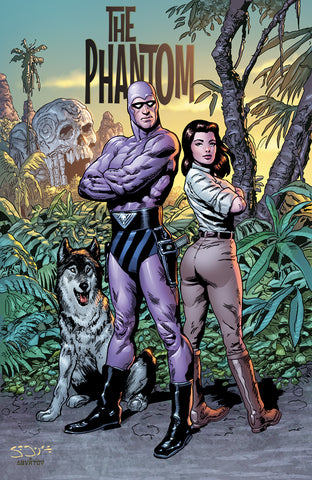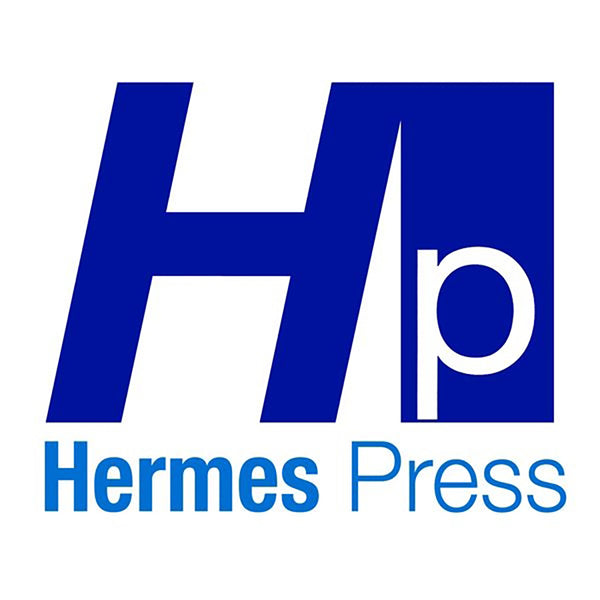Although artist Sean Joyce comes fresh to the comic book world, but he is no stranger to popular culture and media. From Leonard Nimoy to George Lucas, he's worked with all of the Hollywood greats on some of their biggest films, and now he's on his first journey with The Ghost Who Walks. Below is an interview conducted online with Managing Editor Sabrina Herman.
Sean Joyce has also created the limited edition cover for the Peter David and Sal Velluto The Phantom graphic novel, shown below.


Sabrina Herman: I understand that you are ‘new’ to the comic book world- can you tell me a little about yourself? Where you grew up; what your first job in the art/movie/book world was; favorite movie? Any fun facts about yourself?
Sean Joyce: I grew up in LA. suburbs, My dad was an actor and so I was always around the theater, films, and arts. My brother and I collected comics as kids and that is where I learned to draw.
We all copied the best artists around; Kirby, Buscema, Steranco, and Frazetta. I was 12 years old in 1968 when these artist did their great work.
I was self-taught and knew I would do something in the fantasy art world. I went to Hollywood when I graduated from high school and worked in theaters and was also a tour guide at Universal Studios.
Then I responded to and add in the LA Times that Bakshi studios was look for artists to work on "The Lord of the Rings", so I got my portfolio accepted and worked on the entire production as an animator and character designer. I went on to work in live action films then as a storyboard artist illustrator.
My favorite film work I had during that time was on Stripes at Columbia Pictures. I then went on to work at ILM as a matte painter and storyboard artist.
My favorite films are Casablanca and 2001: A Space Odyssey.
SH: You worked on projects for George Lucas- care to tell me about those experiences? What was your favorite project with him?
SJ: I was hired on to work on Revenge of the Jedi but left because of some relationship logistics problems and then returned 3 years later to work on Explorers, Star Trek IV: The Voyage Home and Willow, etc. It was great to work on Star Trek IV because it was directed my Leonard Nimoy and he especially liked my matte painting of Vulcan in the scene where the Romulan Bird of Prey takes off. Nimoy liked that I had worked into the image some geographic markings from the Nasica plans.
SH: What was your favorite project while working for Columbia Pictures?
SJ: I've done story boards at Disney studios on Bradbury's Something Wicked, on Star Trek II at ILM and on Stripes at Columbia Pictures. The great thing with storyboards is that sometimes, like on Stripes, the boards are used like a map or guide for both the director and the cinematographer and the DP and the practical effect director as well as by the actors. I boarded that ending escape from Russia scene after a very brief discussion with Ivan Reitman and that board sequence was almost exactly shot and put together on screen as they were drawn. That is the coolest.
SH: Tell me about some of the storyboards you’ve done and worked on- Is there any particular technique to them that transfers well to comic books?
SJ: Storyboards are great stepping stone for comic art because they have to be done so very fast and they entail seeing as a director and as a cinematographer would see. You get to be a visual storyteller. And you get to draw all the time. That is why I went into animation and storyboarding– so I would have to draw 8-10+ hours a day. You get so much better at drawing when your must do it on those jobs.
I left the motion picture work world because it became the world of the computer. Photoshop took over and all real art skills were at its mercy. What I'm grateful for now is that in the comic industry, to a good extent, the hands-on drawing remains unadulterated and pure.
I left the film world because I wanted to try to succeed as a fine artist. I didn't want to be the tool of someone else’s vision. I wanted to make my vision be my work. The figurative artist has, in all of art history, been utilized to bring to life the great myths. The ancient Greeks had their then best artist bring their hero's to life and the Romans did as well to maybe a greater degree. And then the Catholic Church hired the greatest figurative artists in history, Michelangelo, Leonardo, and Caravaggio to propagate their myths. A vision of the new Man was the artistic objective of the Renaissance. It's the calling of all great figurative artists to find, develop, and present their times most heroic new Man. It's the very purpose, conscious or unconscious, of the comic artist; to promulgate and elaborate the new inspirable ideal hero. So I'm just proceeding on this course that all the great antecedent figurative artist have work toward. Perfecting a new ideal vision of man.
SH: You work primarily in the fine arts- How do you expect to transition that skill into comic books?
SJ: I had always expected to get into doing making comic art, I trained myself to do that as a young boy. It just took me a bit longer to get to working on it. I wanted to be here, in the comic world as an artist. I aspired to be here. It is just for obscure and mysterious reasons so much harder to get into the Comic world as an artist than it was to get into the motion picture art world. I got into animation one day, I got into storyboarding just as easily. And the day I walked into ILM I had two great jobs offered to me: Matte painter and storyboard artist on Return of the Jedi. But after those successes it took me some twenty five years to get into the comic art world. I'm very glad to finally be here.
SH: Do you have a favorite comic artist?
SJ: The old ones are Jack Kirby; he was my most favorite. Him and John Buscema. I also liked Jean Giraud "Moebius". I was so driven by the work of Frank Frazetta both his illustrations and his comic work. Recent or new artist I'm not as familiar with I'm sorry to say. I like Jorge Zaffino and Frank Cho and I especially like Travis Charest. There are really some great comic artists today that I must get to know better. I hope to be one.
SH: Who is your favorite classic artist?
SJ: I'll take them in order of appearance. Michelangelo, Leonardo, Rubens, Rembrandt, Velasquez, Laurence Alma Tadema, Waterhouse, Rodin, Charles Marion Russell, Salvador Dali, Andrew Wyeth, Lucian Freud and Robert Stevens and Roberto Fery.
SH: As you also work in sculpture, who is your favorite modern sculptor?
SJ: My favorite modern sculptor is me.
SH: How do you feel about diving into comic books? Working on a project with history like The Phantom has got to be interesting.
SJ: As I said I have always wanted to work on a comic or as a comic artist so it is great to be poised and engaged in doing so on the Phantom comic.
And the Phantom is great as a character to work with because of his history and that he has no super powers. Standing on his intense physical, instinctive and charismatic and even mystical aspects of his being to prevail in his adventures is his appeal. And being, as I am, a bit old school and a bit older it's fitting to be working on a classic character bringing both the old style classical influences and the best of the so powerful sixties comic art references along with the best of the what can be gleaned from the contemporary comic art influences.

3 comments
Fantastic powerful artwork! The artist, Sean Joyce is a master. Hope to see lots more of his work.
Can’t wait. Sean can really make this material sing!
Looking forward to it – interesting! The graphic novel also sounds exciting. Long live The Phantom!